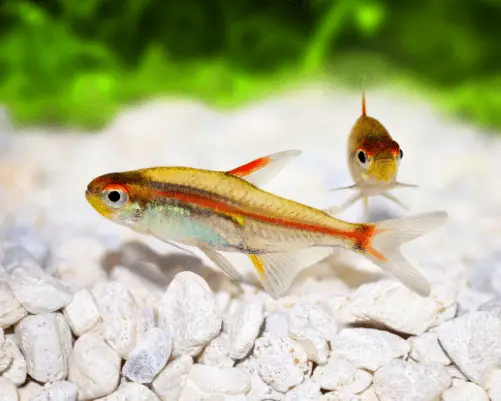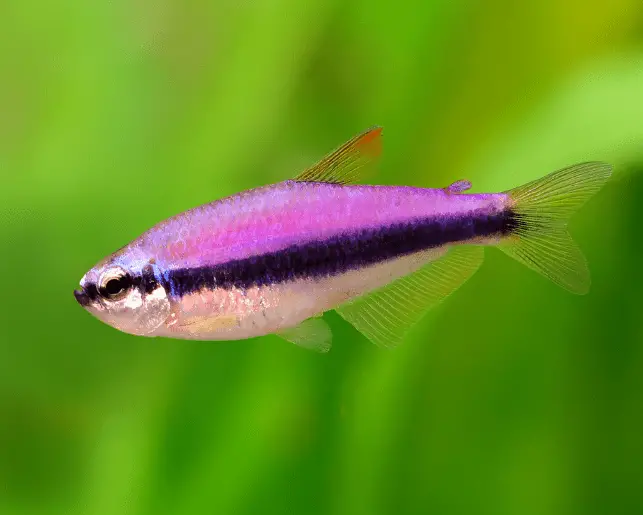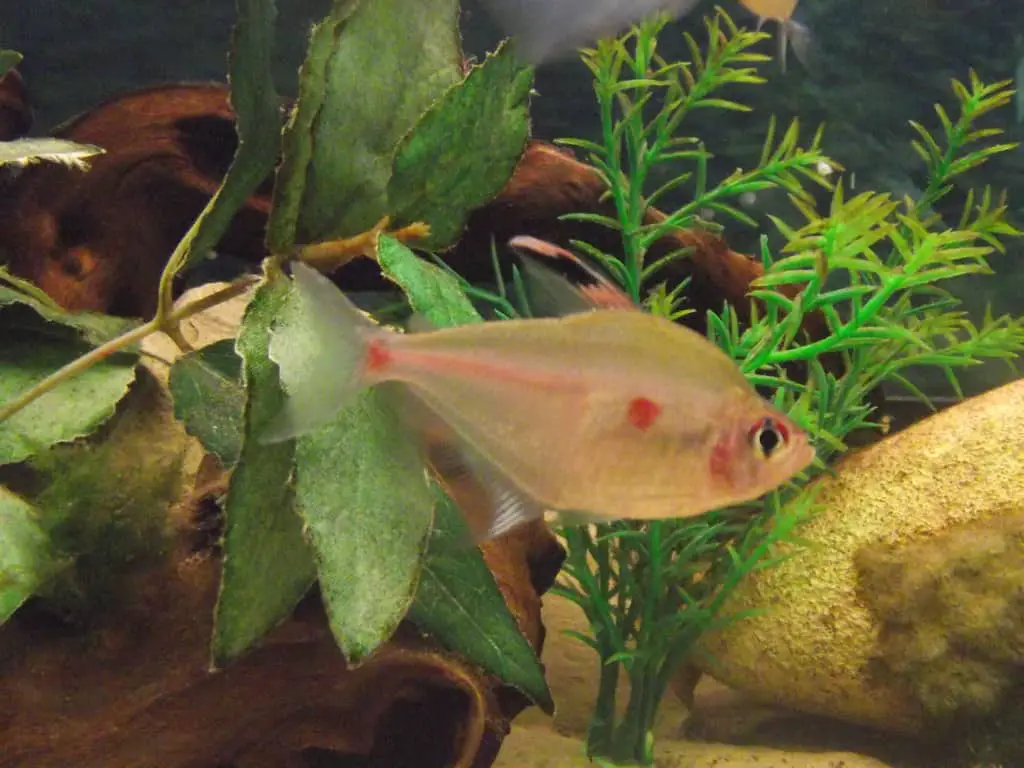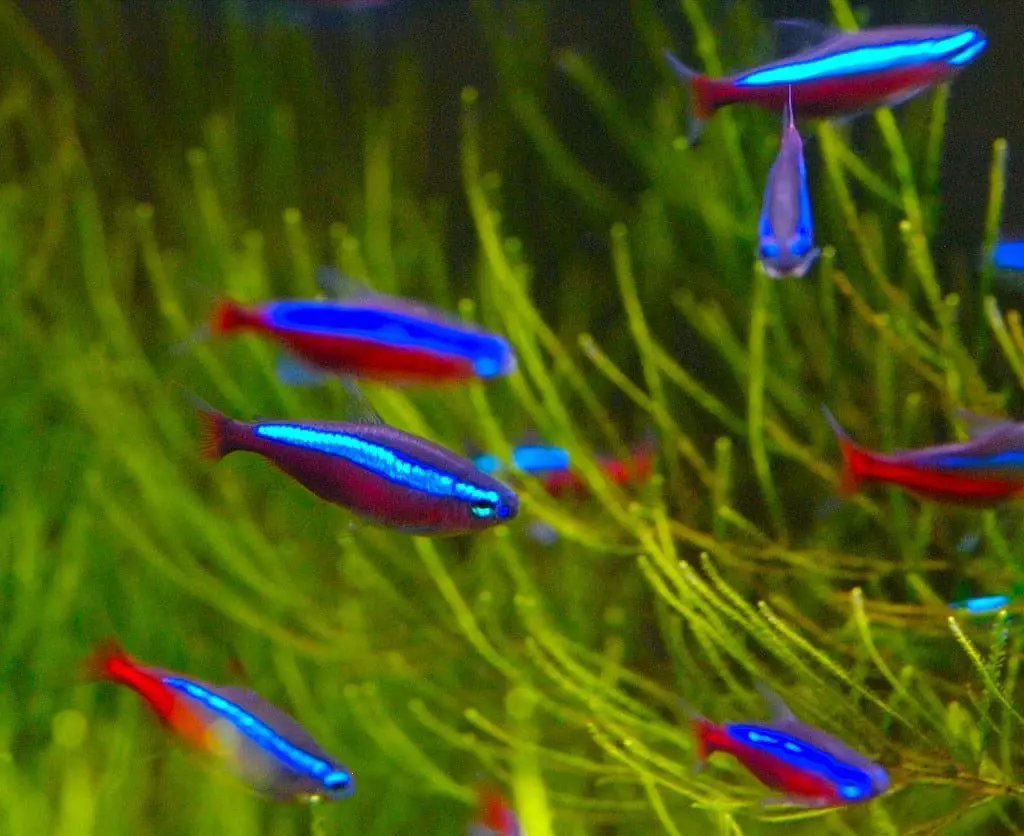One of the best things about owning a community tank is having a wonderful array of different fish, covering different shapes, sizes and colours, as well as getting to see their personalities take shape as they get used to their new home.
There is a downside to having a community tank though. Sometimes trouble brews between different species, or within a species.
There is a way to eliminate this though, which is to do your research before adding a new type of fish to your tank. This way, you will spend less time stressing over the stress levels of your fish kids, and more time enjoying how they all get along peacefully together.
In this article, I’m going to discuss if tetra fish are aggressive, what can cause any aggression, how to recognise it, and how to reduce it.
Tetras are a popular choice for many aquarium enthusiasts due to their beautiful colors and lively behavior. However, one question that often arises among aquarists is whether tetras are aggressive fish. In this article, we will explore this question and provide some insights into the temperament of tetras.
Tetras are a type of freshwater fish that belongs to the Characidae family. There are numerous species of tetras, including neon tetras, cardinal tetras, and black skirt tetras, among others. These fish are known for their small size, bright colors, and peaceful nature, which make them a popular choice for community aquariums.
Are Tetra Fish Aggressive?
In general, tetras are not considered to be aggressive fish. They are relatively peaceful and can be kept with other non-aggressive fish species in a community aquarium. However, there are some factors that can influence the behavior of tetras and make them more aggressive.

Reasons Why Tetras May Show Aggression..
Establishing a pecking order.
This is relatively normal behaviour with any species of fish if you have more than one male. The group needs to establish who is the boss and who isn’t. This is usually decided by very low level aggression, which can often be mistaken for playing.
Male tetras can be territorial and may display aggressive behavior towards other male tetras, especially during breeding season. This behavior is often seen in species such as the black skirt tetra, which is known for its territorial behavior.
Not enough space.
Tetras need space to swim, as they love to cover most of the tank. A tall tank is also good for them and any other active fish as it gives them more swimming space.
Use a stocking calculator, like AQADVISOR.COM to help you work it out. They take the shape of your tank into consideration, as well as the size.
Not enough food.
It’s not just humans that get hangry. A hungry fish can be a very aggressive fish. Not feeding your fish enough can be as bad as overfeeding them. Getting the amount right for your tank can take a few goes to get correct, but it is very important.
They are in spawning condition.
Behaviorally, a male tetra in spawning condition will become more territorial and aggressive towards other males. He may also chase and nip at other fish in the aquarium, particularly those of the same species. This behavior is a natural instinct to protect his territory and ensure that only he mates with the female.
Not leaving the ladies alone.
A male tetra in spawning condition will perform a courtship dance to attract a female. This dance involves swimming around the female in a circular motion while flaring his fins and displaying his vibrant colors. If the female is receptive, she will follow the male, and they will then initiate the spawning process.
Overall, a male tetra in spawning condition will display physical and behavioral changes that are necessary for successful breeding. These changes are a natural part of the breeding process and should not be a cause for concern, as long as the male is not excessively aggressive towards other fish in the aquarium.

How do Tetras Show Aggression?
There are other reasons why tetras look like they are showing signs of aggression, when in fact, it is not as bad as it looks.
Sparring.
Male tetras can spar, particularly during the breeding season when they become territorial and aggressive towards other males. Sparring is a form of aggressive behavior where two male fish engage in a ritualized fight to establish dominance and territory.
During sparring, male tetras will often swim in circles around each other, flaring their fins and displaying their vibrant colors. They may also nip at each other’s fins, but these interactions are usually not severe and do not cause physical harm.
Sparring is more commonly observed in tetra species that are known to be more aggressive, such as the Buenos Aires tetra or the Serpae tetra. However, even peaceful species of tetras like the neon tetra may display some level of sparring behavior during the breeding season.
It is important to note that sparring is a natural behavior in male tetras and is often necessary for successful breeding. However, excessive sparring or aggression can be harmful to other fish in the aquarium, and it may be necessary to separate the aggressive fish to prevent injury or stress.
Mating.
Male tetras may display aggression when mating, particularly towards other males. During the mating process, male tetras become territorial and competitive, and may engage in sparring or nipping behavior to establish dominance and attract a female.
Male tetras in breeding condition will often display brighter colors and more intense behaviors, including fin flaring, chasing, and territorial aggression. They may also engage in a courtship dance to attract a female, swimming around her in circles and displaying their colors and finnage.
While some aggression during mating is normal and necessary for successful breeding, excessive aggression can be harmful to the health and well-being of the fish. It is important to provide enough space and hiding places in the aquarium to minimize aggression and stress, and to remove any aggressive fish that may be causing harm to other fish in the tank.

Here are a few things for you to look out for, to help you decide if your tetras are actually being aggressive, which could threaten the health or well-being of your other fish.
Signs of aggression to look out for.
While tetras are generally peaceful fish, there are several ways in which they can display aggression. Here are some common signs of aggression in tetras:
- Nipping: Nipping is a behavior where a fish bites or attacks another fish’s fins. This behavior is often seen in male tetras during breeding season when they become territorial and aggressive towards other males. Nipping can cause physical harm to other fish and can lead to infection and disease.
- Chasing: Chasing is another sign of aggression in tetras. A male tetra may chase other fish in the aquarium, especially if they are of the same species or if they are perceived as a threat to their territory.
- Fin flaring: Fin flaring is a behavior where a tetra will flare out its fins to intimidate other fish. This behavior is often seen in male tetras during breeding season, where they use it to attract females and intimidate other males.
- Hiding: While not a direct sign of aggression, hiding can be a sign of stress, which can lead to aggression in tetras. If a tetra is not provided with enough hiding places in the aquarium, it may become stressed, which can lead to aggressive behavior towards other fish.
- Ramming: Ramming is a behavior where a tetra will charge at other fish in the aquarium, often resulting in physical harm. This behavior is usually seen in larger tetra species, such as the Buenos Aires tetra or the Serpae tetra.
It is important to note that aggression in tetras is not always a sign of malice or bad behavior. In some cases, aggression can be a natural part of their behavior, especially during breeding season. However, if aggressive behavior becomes excessive and leads to physical harm, it may be necessary to separate the aggressive fish from the rest of the aquarium.
How to Reduce Aggression in Tetras.
Correct male to female ratio.
I would always recommend having your male to female ratio as 1 male to every 3 females at the very least. This will stop the females from being harassed constantly by the males.
Correct tank size.
This is essential no matter what types of fish you have. One of the main reasons why fish get stressed is because they don’t have enough space. This can result in fish hiding away, or fighting with their own type, or other breeds, because they feel trapped.
Always make sure you don’t overstock your tank. When calculating how many fish can fit into your tank, you have to calculate using their adult size, not the size they currently are. Always try and understock slightly to be on the safe side.
As well as considering the size of your tank, you also need to think about the shape of it as well. This is essential when it comes to fish like tetras, who are one of the most active fish to put in your tank. They need plenty of space to dart around in.
Have hiding places.
Having some ornaments and plants in your tank is always a good idea. You don’t have to have real plants either, the imitation ones do their job in providing shelter or hiding places for fish for when they need to just have a moment to themselves.
Fish can feel exposed when in a stressful situation so it is good to have somewhere for them to retreat to. Having a hiding place or a bit of shelter makes the fish feel a lot safer.
Just always make sure that you don’t fill your tank up with things so much that your fish have no room to swim and have fun, as that can be just as stressful as having nowhere to hide.
Keep the correct number of tetras.
Tetras are more peaceful when in a group of at least 6. They thrive and are happiest in groups of around that number. Don’t have too many more in your tank (unless your tank is massive) because that can lead to aggression over hierarchy.
Putting a single tetra into a tank is never a good idea as they can become quite defensive. This will most likely lead to aggression with the other fish.

Feed them the correct amount.
When you are new to fishkeeping, you are always told that you should never overfeed your fish. It is just as important that you don’t underfeed them as well, as that can also have a damaging effect in your tank.
Hungry fish can be aggressive fish as they may have to race to get to the food first if you aren’t feeding them enough.
It really is a case of trial and error at first when it comes to feeding your fish the correct amount.
A rule of thumb is that all the food you feed your fish should be eaten within 3 minutes. If your fish finish eating everything well within that time, you are not feeding them enough. If, after three minutes, there is still a lot of food floating around the tank, you are feeding them too much, so remember to adjust what you give them the next time you feed them.
Get your timing right.
It is best to add your tetras to the tank at the same time, and preferably when they are juvenile.
If you were to add tetras to a tank that already has some in it, this could cause a problem. The fish in the tank will already have sorted out their pecking order so could be a bit miffed at new guys being added.
Separate aggressive fish.
Separate aggressive fish: If you notice any fish displaying excessive aggression, it may be necessary to separate them from the rest of the aquarium to prevent injury or stress.
Best Tank Mates for Tetras.
Here are some popular tankmates that are compatible with tetras:
- Corydoras catfish: Corydoras catfish are bottom-dwelling fish that are compatible with tetras. They are peaceful and easy to care for, and can help keep the bottom of the aquarium clean.
- Guppies: Guppies are colorful and active fish that are compatible with tetras. They are easy to care for and can add a lively and colorful display to your aquarium.
- Rasboras: Rasboras are small, peaceful fish that are compatible with tetras. They come in a variety of colors and are easy to care for, making them a popular choice for community aquariums.
- Dwarf gouramis: Dwarf gouramis are peaceful, colorful fish that can be kept with tetras. They are easy to care for and can add a unique and interesting element to your aquarium.
When introducing new fish to your aquarium, it is important to monitor their behavior and make sure that they are compatible with your tetras. If you notice any signs of aggression or stress, it may be necessary to remove the fish to prevent injury or stress.

Conclusion.
In conclusion, tetras are generally not aggressive fish, but their behavior can be influenced by various factors such as their environment, gender, and species. Maintaining a suitable aquarium environment with adequate space and hiding places, along with proper research on the species of tetra, can help prevent aggressive behavior in these beautiful fish
Related Articles:
Why does my tetra stay at the bottom of the tank?

